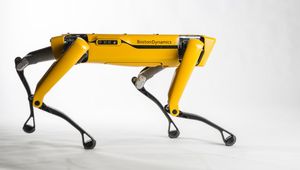DARE Sparrow - DLX-150B Firebolt Engine
DARE’s first liquid-propelled thrust-vectoring rocket engine for the Sparrow Rocket.
Technical Specifications
| Engine | DLX-150B Firebolt |
| Manufacturing process | 3D printed via Inconel 718 |
| Control | Gimbaled via two linear actuators |
| Propellant | liquid oxygen and ethanol |
| Propellant consumption | 6.2 kilograms of liquid oxygen and ethanol per second |
| 90% ethanol and liquid oxygen for 40 sec combustion | |
| Thrust | 15 kN |
| Chamber pressure | 50 bar |
| Cooling Process | regeneratively cooled, film cooling |
| Injector | pintle injector with a copper tip and stainless steel faceplate |
| Igniter | steel wool and gunpowder |
| Tank | 4 aluminium-6082 tanks |
| Total: 150L of Liquid Oxygen and 132L of ethanol | |
| Tanks Pressurization | Nitrogen gas |
| Oxidizer tank: 65 bar | |
| Fuel tank: 84 bar |
Overview
Problem / Solution
Space exploration touches the human desire to explore the unknown, discover new planets, and reach what is beyond the boundaries of science and technology. Accessing space births new knowledge in the fields of technology, health, transportation, public safety, production and energy, and the environment. These explorations answer history-long questions involving the cosmic and the solar system. And as Stratos IV prepares its launch, DARE eyes the future. Given the limitations of a hybrid engine system, the development of a liquid-fueled engine with an active thrust vector control (TVC) must come into place.
DARE’s newest initiative, Project Sparrow, targets building the first liquid-propelled thrust-vectoring rocket engine named Firebolt. It uses a LOX-Ethanol engine for power and control that reaches beyond the 100km Kármán line. The engine is the successor to the Nimbus used in the Stratos IV rocket, propelling DARE’s next generation of powerful rockets. This vision is also the first step in sending the first-ever rocket designed by students to orbit the earth. Project Sparrow will soon create a flight-ready engine integrated into a sounding rocket, which will be a testbed for checking rocket dynamics in the thrust-vectoring engine. Future rocket plans involve incorporating staging and recovery systems.
Design
The DLX-150B Firebolt is DARE’s first liquid-fueled engine, burning 6.2kg/s of liquid oxygen and ethanol that produces a thrust of 15kN. Flowing through 84 channels built around the chamber walls, the flowing ethanol cools this engine regeneratively. This complex manufacturing process is made simple using Inconel 718 for 3D printing, which allows acceptable thermal stresses. As the engine’s small size constitutes extreme heating in the throat, a film cooling process injects a fraction of ethanol from the channels directly to the chamber for added cooling. A cold thin layer formed will protect the nozzle walls from excessive heat.
Feed System & Ignition
The feed system and ignition based its architecture on the work of the Cryogenic Propulsion team, although pneumatic valves replace some solenoid valves to account for larger pressures. The fuel reaches the chamber via the pintle injector, which has a stainless steel faceplate and copper tip. Lastly, as DARE tradition dictates, steel wool around a small charge of gunpowder that allows for a fast reliable ignition surrounds the igniter.
Chamber
At 50 bar chamber pressure, the engine registers a 15 kN thrust. This 40-second combustion uses 90% of the ethanol and the liquid oxygen. However, the propellant will only flow to the chamber when it has a higher pressure than the operating pressure of 50 bar. The action proceeds using Nitrogen gas in the pressurized oxidizer and fuel tanks, reaching 65 and 84 bar respectively.
Tanks
The test fire uses a 4-tank setup given the acquisition and size limitations. These 4 aluminum-6082 tanks can withstand 65 and 84 bar pressures. They fit 150 liters of liquid oxygen and 132 liters of ethanol. The 7 gaseous nitrogen bottles pressurizing the system allow constant pressure during the entire engine burning time. The big bundle in the middle supplies the nitrogen, whereas the leftmost tank carries the ethanol and the right ice-covered tank holds the LOX tank.
Control
Aerodynamic control surfaces become no longer effective at high altitudes where the air density is low, requiring a different control means. With the thrust vector control, the rocket can control its attitude with its engine, not only with the control surfaces. DLX-150 engine is DARE’s first thrust TVL engine. It uses two linear actuators that change the thrust direction, making the rocket turn on its own.
Testing
The TVC gimbal tested to destruction survives the running engine thrust. While the gimbal ring gets destroyed, the failure tallies above the required load, indicating a pass in the test.
The thrust bench, equipped with load cells, connects to the engine to measure the thrust. The testing in a military facility in the Netherlands observed a safe and controlled environment. The facility usually tests jet engines of the Royal Netherlands Air Force.








